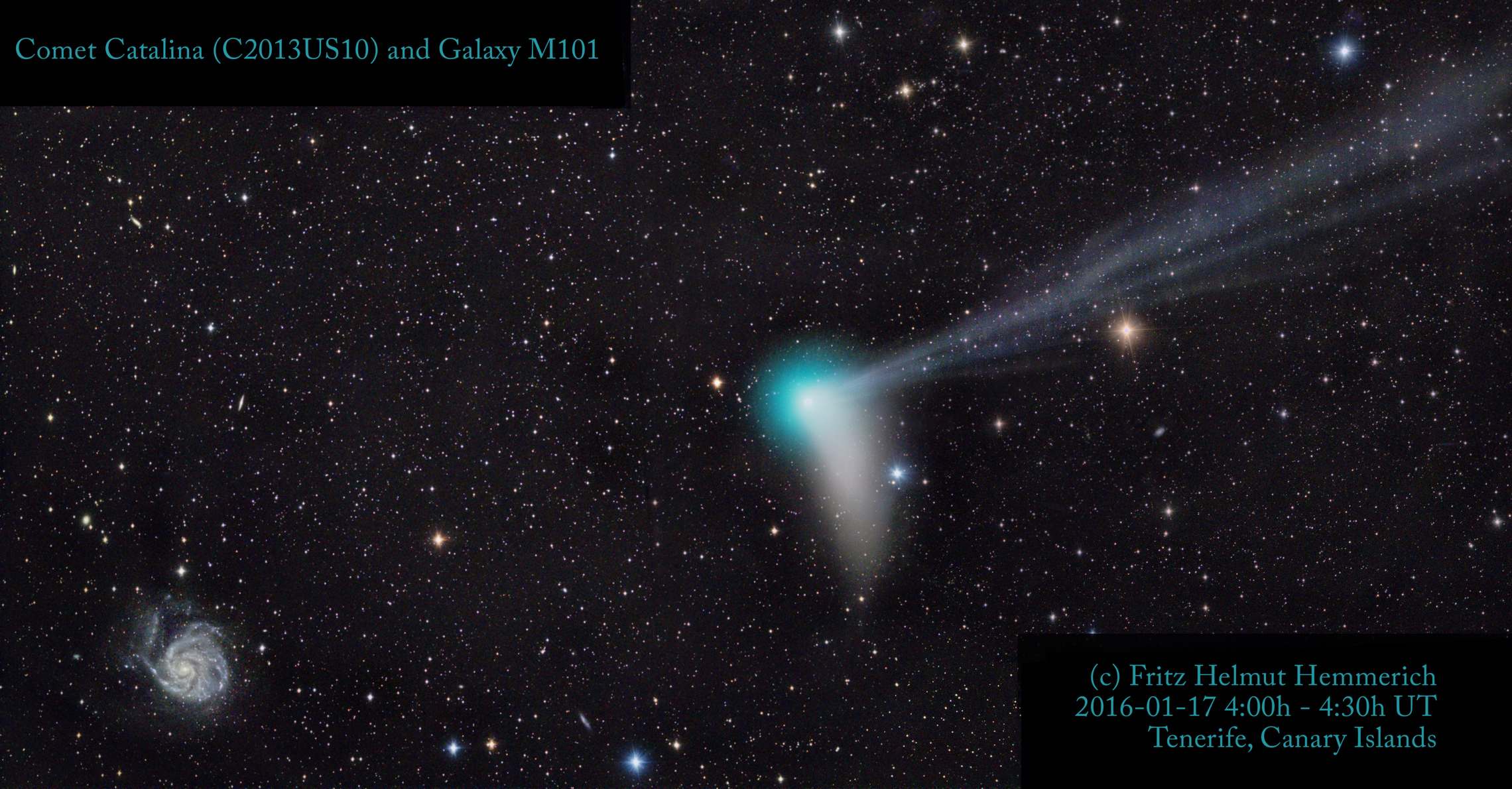
Copyright:Fritz
Helmut Hemmerich
原文:
Sweeping through northern skies, Comet Catalina (C/2013 US10) made its closest approach on January 17, passing about 6 light-minutes from our fair planet. Dust and ion tails clearly separated in this Earth-based view, the comet is also posed for a Messier moment, near the line-of-sight to M101, grand spiral galaxy in Ursa Major. A cosmic pinwheel at the lower left, M101 is nearly twice the size of our own Milky Way galaxy, but some 270 thousand light-centuries away. Both galaxy and comet are relatively bright, easy targets for binocular-equipped skygazers. But Comet Catalina is now outbound from the inner Solar System and will slowly fade in coming months. This telescopic two panel mosaic spans about 5 degrees (10 Full Moons) on the sky.
中文翻譯:
🌌✨ 掃蕩北方天空,彗星 Catalina (C/2013 US10) 在1月17日達到最近的接近,距離我們的地球約6光分鐘。這幅地球上的觀測畫面中,塵埃和離子尾清晰分開,彗星正準備進入梅西耶的視野,位於大熊座的 M101 大螺旋星系附近。作為一個宇宙旋轉陀螺,M101幾乎是我們的銀河系的兩倍大,卻遠達27萬光世紀。這兩個對於使用雙筒望遠鏡的天空觀察者來說都是相對明亮的目標。但隨著彗星 Catalina 現在正逐漸遠離內太陽系,未來數月將漸漸變得黯淡。這幅望遠鏡拍攝的兩面馬賽克圖像,涵蓋了約5度(10個滿月)的天空範圍。
#CometCatalina #彗星 #天文觀測 #M101 #大熊座 #銀河系 #宇宙 #望遠鏡 #天空之美 #星空探索 #天體物理 #觀星活動
來源:NASA每日圖片


